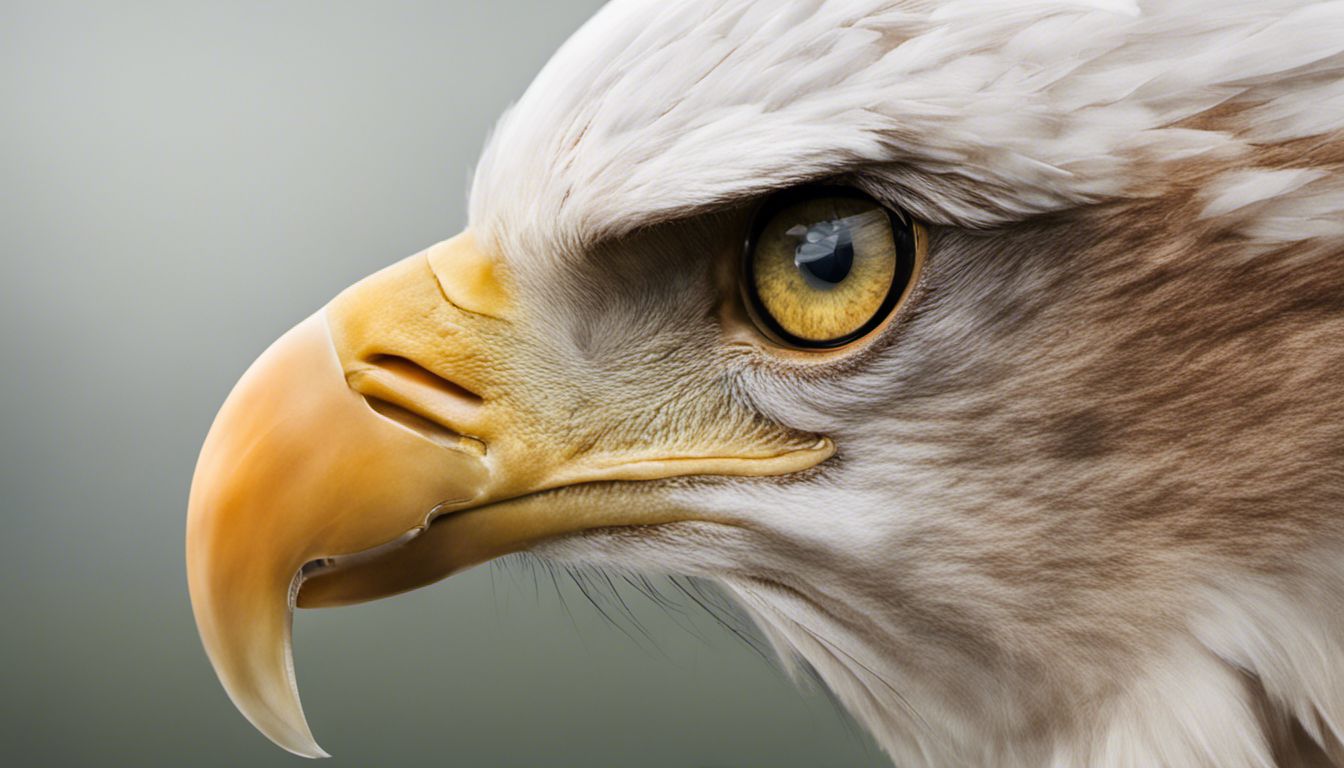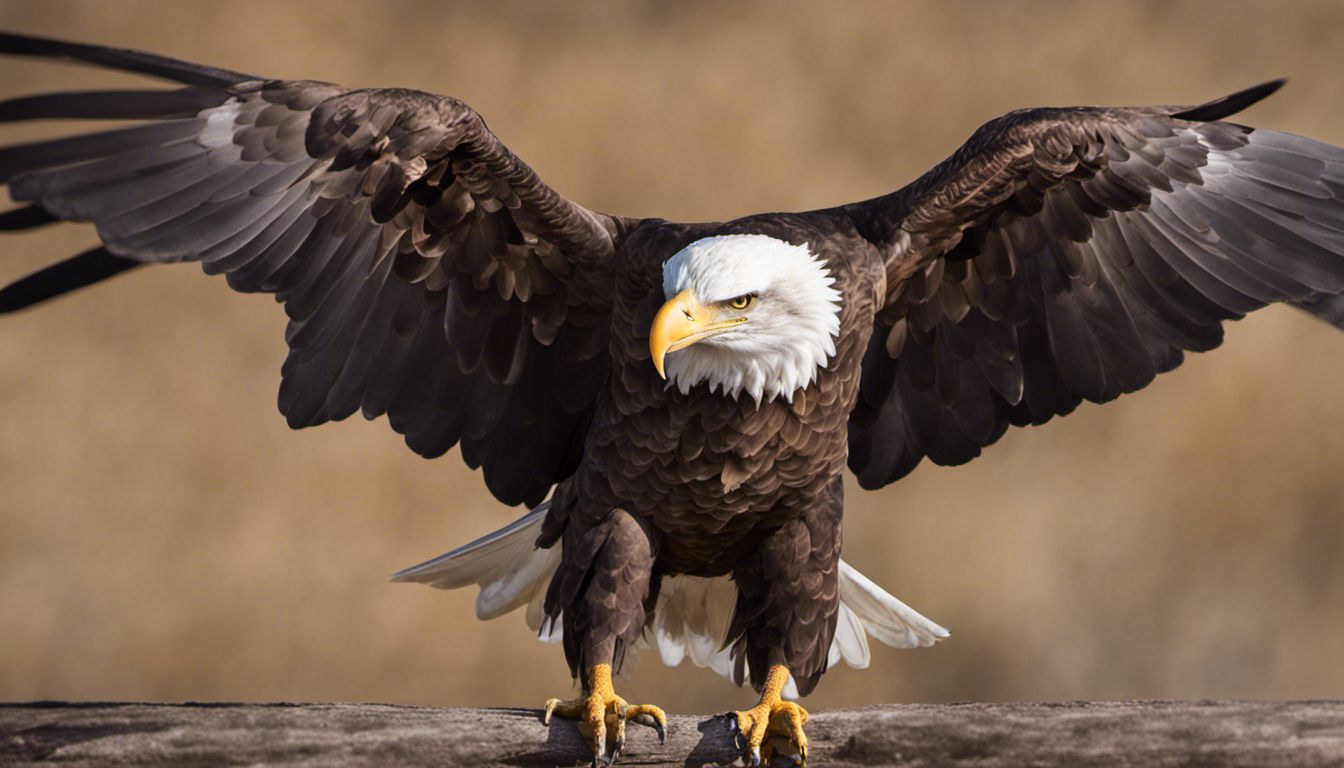A bald eagle has exceptional eyesight, allowing it to spot prey from several miles away. Their visual acuity is estimated to be around four to eight times stronger than that of an average human.
- Visual Acuity: Bald eagles have outstanding visual acuity, enhancing their ability to detect prey at great distances.
- Eye Anatomy: Their large eyes, the structure of their retinas, and the density of photoreceptor cells contribute significantly to their wide range of vision.
- Behavioral Perspective: The eagle’s remarkable eyesight is crucial for hunting and navigation, allowing them to spot movement from up to two miles away.
1. The Visual Acuity of the Bald Eagle

When discussing the visual acuity of bald eagles, it’s fascinating to discover that their eyesight is indeed remarkable, especially when compared to human vision. Bald eagles can see 3-4 times farther than humans, giving them the incredible capability to discern another eagle soaring at a distance of nearly 50 miles away. The term ‘visual acuity’ refers to the sharpness and clarity of vision, and in the context of bald eagles, it is essential for successful hunting and survival.
To give more context to the bald eagle’s impressive eyesight and visual acuity, consider the following points:
- Bald Eagle Eyesight: The eyesight of a bald eagle is among the sharpest in the animal kingdom, vital for their survival as predators.
- Comparison with Human Vision: With the ability to see 3-4 times farther than humans, eagles have a considerable advantage when it comes to spotting prey or other eagles from great distances.
- Concept of Visual Acuity: Visual acuity in bald eagles is defined by their ability to see fine details from afar, a key factor in identifying prey and navigating their environment.
2. Eagle Eye Anatomy and Their Range of Vision

The anatomy of an eagle’s eye is a marvel of nature’s design, tailored to provide exceptionally sharp eyesight. Unique physiological adaptations allow bald eagles not only to spot prey like a vole from two miles away but also to see ultraviolet light, which can help in tracking the urine trails of small prey. These anatomical features are a testament to the eagle’s evolution as a skilled predator.
Let’s delve deeper into the anatomical features that enhance the eagle’s vision:
- Eagle Eye Anatomy: Bald eagles possess larger eyes relative to their head size, a higher number of photoreceptor cells, and a deeper fovea which all contribute to their acute vision.
- Eagle Vision Range: These birds have a vast vision range, with the capability to detect small prey like voles from up to two miles away, illustrating their hunting prowess.
- Physiological Adaptations: The ability to see ultraviolet light is one of the specialized adaptations that play a critical role in an eagle’s ability to identify and track down prey from great distances.
3. Behavioral Implications of the Eagle’s Eyesight

The acute vision of the bald eagle has profound implications for its behavior, particularly in terms of hunting and mating. Eagles can spot their prey from soaring altitudes, and this ability is not only a cornerstone of their hunting strategy but also plays a role in mate selection and territory surveillance. Having sharp vision gives bald eagles a significant survival advantage, allowing them to efficiently locate food and interact with their environment.
Let’s take a closer look at how the keen eyesight of bald eagles influences their behavior:
- Hunting Behavior: The bald eagle’s incredible eyesight is instrumental in spotting fish or small mammals from high above, leading to successful hunting expeditions.
- Eagle Flight Altitude: Eagles can maintain a high vantage point, often hundreds to thousands of feet in the air, using their vision to scout for prey below.
- Eyesight Benefits: Beyond hunting, sharp vision aids in identifying potential mates, assessing rivals, and safeguarding their territory, thereby underscoring the importance of vision for survival.

